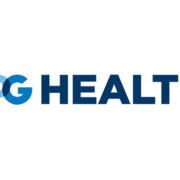Demystifying omnichannel marketing in health care: simplifying digital strategies for effective engagement
Demystifying omnichannel marketing in health care: simplifying digital strategies for effective engagement
By Preetha Vasanji, Doceree
Omnichannel marketing has emerged as a crucial strategy for brands navigating the dynamic contemporary healthcare landscape. However, it is often misunderstood as a complex and an overwhelming task by marketers since they must bring together a range of platforms, handle large amounts of data, and ensure consistent messaging. This is true to an extent, as the traditionally functioning healthcare industry is now increasingly embracing digital marketing methods. However, with a sound understanding of digital platforms and way to effectively integrate all channels, brands can easily deliver value and relevance, fostering meaningful engagement with their audience, today. This article aims to simplify the development of an omnichannel marketing strategy, breaking down the digital engagement process.
Step 1: Aligning with brand objectives
Aligning brand objectives with omnichannel marketing strategies in healthcare marketing is essential for creating a cohesive and impactful presence in the market. By clearly defining brand objectives, such as improving patient engagement, increasing HCP interactions, or enhancing brand awareness, marketers can tailor their omnichannel approach to ensure consistency and relevance across all touchpoints. This involves understanding the unique behaviors and preferences of the target audience on various digital platforms and integrating these insights to deliver personalized and seamless experiences. By aligning brand objectives with omnichannel strategies, healthcare marketers can effectively communicate their value proposition, build stronger relationships with their audience, and drive better outcomes in a highly competitive landscape.
Step 2: Understanding engagement platforms and HCP preferences
HCPs engage with different platforms based on their needs and preferences. The two primary types of platforms are endemic and point-of-care (POC) platforms. Endemic platforms are highly specialized digital venues designed for professional content consumption by HCPs. Examples include medical journals, educational portals, and professional networks. HCPs visit these platforms to stay updated on current trends, participate in discussions, or advisory services. These spaces offer brands an opportunity to deliver educational value, facilitate meaningful discussions, and foster strong professional relationships with HCPs.
The other kind is POC platforms, primarily EHRs, telemedicine, or clinical decision support tools. These platforms provide HCPs with critical clinical data, treatment guidelines, and diagnostic tools at their fingertips. Given the comprehensive nature of POC tools, which include clinical information, decision support, and quality patient care, it is crucial for brands to be visible or recommended for prescribing at the point of care. This visibility ensures that brand messaging is integrated into the clinical workflow, thereby enhancing its relevance and impact on patient care decisions.
Step 3: Integrating advanced technologies and data analytics
One of the key components of a successful omnichannel marketing strategy is the use of advanced technologies and data analytics. These tools enable marketers to gather insights into HCP behaviors and preferences, allowing for more precise targeting and personalization. By regularly analyzing data from various sources, marketers can identify patterns and trends, informing the creation of personalized content and experiences. This data-driven approach ensures that messages are delivered to the right audience at the right time, increasing the likelihood of meaningful engagement.
Step 4: Bringing it all together
The goal of omnichannel marketing to HCPs is to create a seamless and integrated experience for them. This involves coordinating efforts across multiple channels to ensure consistency and relevance. To achieve this, healthcare marketers should adopt design thinking principles, focusing on the user experience and journey. This approach involves understanding the needs and pain points of HCPs and patients and designing interactions that address these effectively. By putting the audience at the center of the strategy, brands can create experiences that resonate and drive engagement.
Step 5: Identifying the right partners and methods
It’s important to highlight the incredible ad/martech and data partners that lie at the very heart of omnichannel marketing automation. These partners also find themselves doing a better job at synching disparate channel data and educating on HCP behaviors while ensuring messages are received in their proper context. While simple targeting can drive the message in front of thousands of HCPs quickly, smart targeting bundled with archetype, sailing together with advanced analytics, allows for the personalization of advertising messages down to tailor-fit HCP needs and preferences for more significant brand influence.
To conclude, for effective and smooth execution of an omnichannel campaign, it’s essential to understand the varied platforms and technologies and how they strategically deliver coherent, consistent, and relevant messages. An effective omnichannel marketing strategy in healthcare requires driving brand objectives through cohesive cross-channel communications, understanding HCP platforms and preferences, and applying advanced technologies and data analytics to deliver contextually appropriate messages. By integrating digital platforms with real-time elements, brands can create seamless experiences that resonate with both the target audience and business objectives. Ultimately, omnichannel marketing in healthcare aims to create relevant touchpoints that foster better health outcomes and strong professional relationships, navigating the complexities of the healthcare sector.
Preetha Vasanji is president, emerging markets, Doceree.










